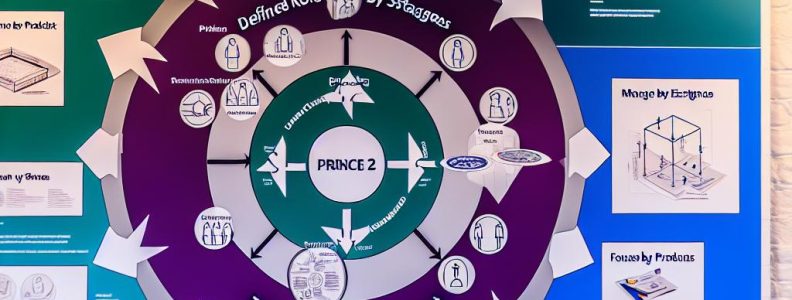Understanding the PRINCE2 Framework
The PRINCE2 framework, with its full name being Projects IN Controlled Environments, represents a robust and systematic approach to project management. Recognized and employed globally, this framework offers a structured methodology designed to ensure successful project execution. It emphasizes the importance of scalability and the adaptation of its principles to align with the unique requirements of any given project.
The Principles of PRINCE2
The PRINCE2 framework is built upon a foundation of seven guiding principles, which form the backbone of its implementation. These principles are crafted to maintain consistent management standards across projects, which in turn facilitates flexibility and adaptability.
One of the crucial principles is continued business justification. This principle addresses the need for ongoing evaluation to ensure that the project remains feasible and in harmony with the organization’s strategic objectives. Rather than viewing projects as static entities with a single justification point, PRINCE2 ensures they are subject to regular review and assessment throughout their lifecycle. This continuous process ensures alignment with business goals and prevents deviation from intended objectives.
Another fundamental aspect of the PRINCE2 framework is the clear identification and assignment of roles and responsibilities. By delineating specific contributions and accountabilities, it ensures each team member understands their function within the project. This clarity helps reduce ambiguity and fosters a collaborative environment where stakeholders can work synergistically towards shared goals.
Processes and Stages
PRINCE2’s structured approach is embodied in its seven distinct processes, providing a comprehensive roadmap from project initiation to closure. These processes encapsulate all activities and considerations required to achieve successful project delivery.
The process begins with the Initiating a Project phase. This initial stage is pivotal as it sets the blueprint for the entire project. Necessary documentation is prepared, establishing the project’s scope, objectives, and framework, and thus ensuring a strong foundation for subsequent activities.
Following this is the Controlling a Stage process, which plays a crucial role in maintaining project momentum and direction. Here, project managers diligently monitor progress against the established plan. This real-time oversight facilitates timely interventions, should deviations occur, ensuring the project remains on track to meet its targets and deliverables.
Towards the end of the project lifecycle is the Closing a Project phase. This stage is designed to ensure a thorough and orderly transition of project outcomes. It includes verifying that all completion criteria are met and that deliverables are appropriately handed over, thus signifying the project’s successful conclusion.
Embedding PRINCE2 in an Organization
One of PRINCE2’s notable strengths is its adaptability, making it suitable for integration within the organizational framework of any enterprise, regardless of its size or field. Organizations can tailor the principles and processes of PRINCE2 to align seamlessly with their corporate culture and strategic goals, thereby reinforcing their project governance capabilities.
Embedding PRINCE2 within an organization promotes a structured and consistent approach to project management. The thorough documentation required by PRINCE2—covering every phase of a project—underpins this structure by providing a clear audit trail of decisions, changes, and outcomes. This not only bolsters accountability but also enhances transparency, as team members and stakeholders can trace each step of the project lifecycle, facilitating better understanding and smoother communication.
The Benefits of PRINCE2
The adoption of the PRINCE2 framework offers manifold benefits to organizations. By providing unambiguous project roles and responsibilities, PRINCE2 facilitates the efficient allocation and control of resources. These clearly defined roles help avert potential conflicts and streamline decision-making processes, which are crucial for maintaining the trajectory of project goals.
Moreover, PRINCE2’s flexibility and scalability render it applicable to a diverse array of project types. This versatility enhances its utility across various sectors, allowing organizations to apply a standardized approach to project management that ensures coherent and consistent project delivery. The universal applicability of PRINCE2 means that it can be harnessed by organizations aiming for streamlined operations and effective project completions, regardless of industry.
Organizations looking to implement PRINCE2 often experience an upsurge in project success rates due to its systematic processes and emphasis on alignment with business objectives. The framework acts as a vital tool for achieving strategic aspirations, and its widespread acceptance underscores its efficacy in facilitating successful project outcomes.
For those interested in delving deeper into the intricacies of PRINCE2, exploring its principles, processes, and applications through extensive resources and assistance, visiting the official PRINCE2 website can provide further guidance and information on implementation strategies and best practices.

